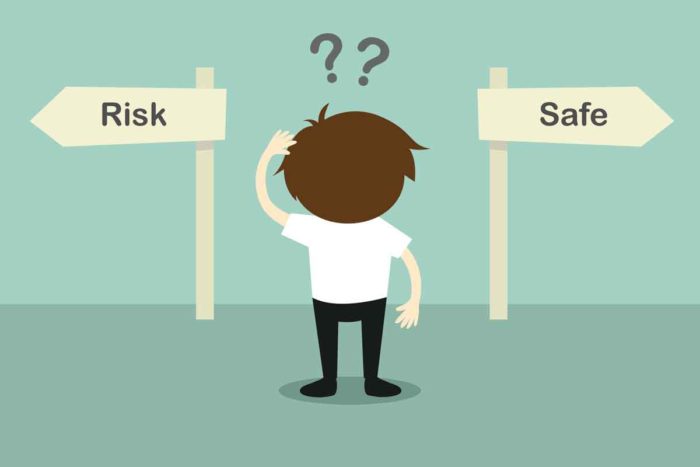
New research sheds light on what’s going on inside our heads as we decide whether to take a risk or play it safe. Scientists at Washington University School of Medicine in St. Louis located a region of the brain involved in decisions made under conditions of uncertainty, and identified some of the cells involved in the decision-making process.
The work, published July 27 in The Journal of Neuroscience, could lead to treatments for psychological and psychiatric disorders that involve misjudging risk, such as problem gambling and anxiety disorders.
“We know from human imaging studies that certain parts of the brain are more or less active in risk-seeking people, but the neural circuits involved are largely unknown,” said Ilya Monosov, assistant professor of neuroscience and senior author on the study. “We found a population of value-coding neurons that are specifically suppressed when animals make a risky choice.”
Value-coding neurons are cells whose activity reflects the value of a stimulus – in this study, the more juice that was offered to a monkey, the bigger the neurons’ response. However, shortly before the subject made a risky choice, these neurons became suppressed.
The researchers also found a separate group of neurons that signal information about uncertainty after the choice but before the risky outcome.
As they go about their everyday lives, people often must choose between a safe option and a better, but riskier, option. Do you stay in a secure job or quit to start your own business? Do you keep $2 in your pocket or use the money to buy a lottery ticket?
When the system of evaluating risk goes awry, it can have a severe impact on people’s lives. Maladaptive risky behaviors are a feature of compulsive gambling, bipolar disorder and attention deficit hyperactivity disorder. People with anxiety, on the other hand, err too far on the side of caution.
To study the neuronal circuits of risk taking, Monosov and colleagues gave rhesus monkeys – whose brains are structured very similarly to ours – a choice between a small amount of juice or a 50-50 chance of receiving either double that amount of juice or nothing at all. Over time, the amount of juice received under either condition would be the same, but one option was safe and the other risky.
It turns out rhesus monkeys like to live on the edge. The monkeys chose the risky option more often than the safe option. Moreover, the researchers found that a group of value-coding neurons in a part of the brain called the ventral pallidum were selectively suppressed when monkeys chose a risky option over a safe one. The ventral pallidum plays an important role in controlling levels of dopamine – a molecule that transmits signals between neurons and makes us feel good.
“The ventral pallidum inhibits dopamine neurons, and suppression of this area during risky behavior may increase dopamine release,” said Monosov, who is also an adjunct professor of biomedical engineering.
The results of the study may fit with observations showing an increase in risky behavior among people who take drugs that increase dopamine – such as methamphetamine users and Parkinson’s disease patients treated with L-dopa.
The study also found neurons in a nearby brain area called the medial basal forebrain became most active after the monkeys made a risky choice but before they learned the outcome of their choice – juice or no juice. That part of the brain provides inputs to a wide network of cortical brain regions involved in learning and memory.
“It makes sense that choosing an uncertain option is an important part of learning,” Monosov said. “When people are uncertain, they are driven to resolve the uncertainty. They approach the uncertain option, explore it, and learn from the outcome of their actions.” Modulating the medial basal forebrain by uncertainty could promote or influence learning. However, this remains to be tested.
Monosov now is studying whether temporarily turning off the ventral pallidum and the medial basal forebrain with targeted drug treatments affect the monkeys’ risk preferences and the strategies they use to learn.
“There are no anatomically targeted treatments for psychiatric disorders associated with misjudging risk, such as pathological gambling and anxiety,” Monosov said. “Now that we know where uncertainty is processed in the brain, we can start looking for ways to modulate it.”
